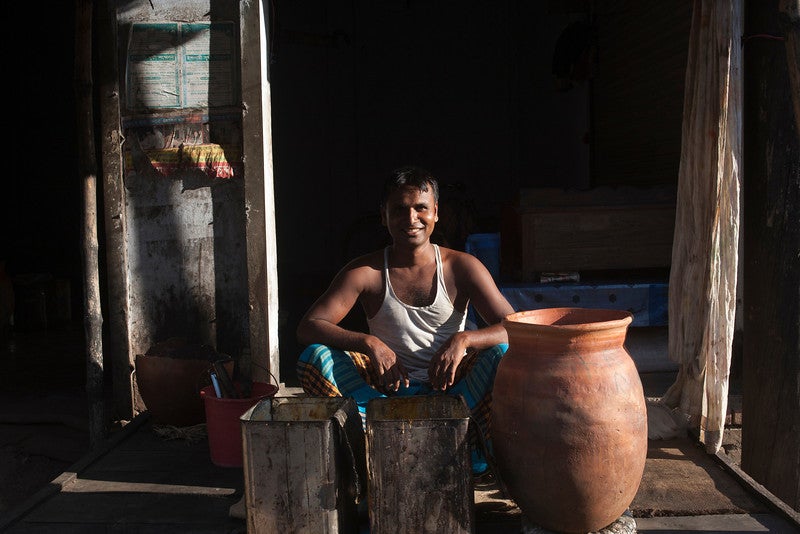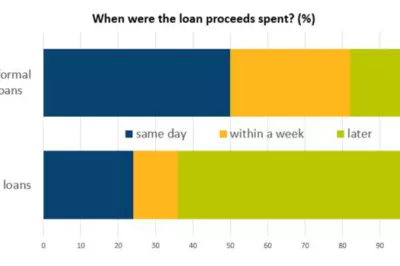Can MFIs Leverage Mobile Banking to Serve Customers Better?
One of the questions we explore in the focus note Microfinance and Mobile Banking: Blurring the Lines? is whether MFIs can leverage m-banking to serve customers better.
A BRAC pilot, which began in November 2011, to test loan repayments for small business borrowers using bKash – a mobile phone-based payment system in Bangladesh - provides some insight into the answer. The pilot was rolled out in five urban branches serving roughly 3,000 individual borrowers. All borrowers were required to make loan repayments over a bKash mobile account, but were not charged any fees. This pilot replaced the traditional repayment process that required customers to visit BRAC branches once a month.
At that time bKash had only been operational for four months. All of its agents were still new to mobile banking and almost none of the customers had previously done any mobile banking transactions.
After eight months of required bKash use, customers were given the choice of repaying with bKash or switching back to the traditional branch option. In the subsequent three months, 42% of customers alternated between using bKash and the branch, 21% used bKash exclusively, and 37% used the branch exclusively.
 A man sells molasses from a large earthen jug.
A man sells molasses from a large earthen jug.
Source: Aj Ghani
Why did customers make these payment choices?
To answer this question, a BRAC research team, with support from CGAP, conducted interviews with 65 customers with loan values between $1,875 and $8,750.
Customers who continued repaying with bKash
82% of customers in this group said that they continued to use bKash because either the agent was closer than the BRAC branch or because it meant less time away from home or work. An agent was, on average, 1.7 kilometers closer than a branch, translating into a time savings of 15 minutes each way. Use of bKash for other purposes did not seem to be a major driving factor. Sixty-five percent did not use bKash for anything beyond their BRAC loan repayment even though 82% knew of other uses.
Customers who stopped repaying with bKash
Thirty-eight percent of customers in this group switched back to paying at the branch because they did not feel comfortable with the bKash technology. Another 38% switched back because they had problems with the agents. On average, these customers used agents that were only 0.7 kilometers closer than a branch, translating into a time savings of seven minutes each way. Customers indicated that they only spent $0.12–$0.25 on transportation costs to arrive at the branch and that they would often go to the area where the branch was located for other reasons, thus eliminating the slight distance advantage of agents. In contrast to those customers who chose to continue using bKash, 62% of customers were not aware that bKash could be used for anything other than making a BRAC loan repayment. Almost all of the customers (85%) said that the main change that would influence them to use bKash again would be to receive a paper receipt, as opposed to just the SMS confirmation.
Customers who alternated between repaying with bKash and at a branch
The reasons for alternating varied. Seventeen percent had a problem with the agent; 33% used the branch when they happened to be nearby; and 28% simply liked the flexibility of having both options. But the main reason why customers continued to use bKash was that either the agent was closer than the branch or it meant less time away from home or work.
What have we learned?
Overall the pilot supported the hypothesis that mobile banking can add value to a microfinance business and, more importantly, to its clients. However the pilot also highlighted the importance of timing.
As the Director of BRAC Microfinance, Shameran Abed, put it, “The [bKash] pilot test was an operational success, and we see the potential convenience value for our clients, but we will only roll it out more widely once the agent network is more mature and awareness of mobile financial services among the population is more widespread.”




Comments
Does this study throw any
Does this study throw any additional insights on the reasons why clients are not using the m-money for other transactions beyond repayments?
What resonated with me based
What resonated with me based on experiences in Central America a few years ago with MFI clients making payments on loans while also participating in a pilot to increase the adoption and uptake of debit cards (pre-mobile payment days) were the points raised that some clients want paper receipts instead of SMS only confirmations, and that the problems experienced with agents and lack of comfort with the technology drove some clients from fully adopting the mobile payment method. Solid training and customer service, and some paper required to make it work? Interesting report, thank you for the post.
It is indeed true that mobile
It is indeed true that mobile banking is quite relevant to MFIs particularly for loan repayments. One is that it gives flexibility to use agents for repayment and saves time . In India we have run one such programme under Airtel Money Axis Bank partnership where the learning are more are less similar. The biggest problem that we faced in the initial stage is that Agents were not holding sufficient electronic float( m cash) which led to denial of service to customers. However, over a period of time this evolved and Agents started informing customers to come and repay as and when the m cash was available,
My experience of using mobile
My experience of using mobile technology for microfinance installments in Pakistan is that one problem is use of our clients money by the mobile agents. Some agents pretend that 'the system is down', take the money from the client, promising to post it ASAP and then use the installment money as working capital for 5, 10 even15 days.
bKash is now very popular in
bKash is now very popular in our country.
Add new comment